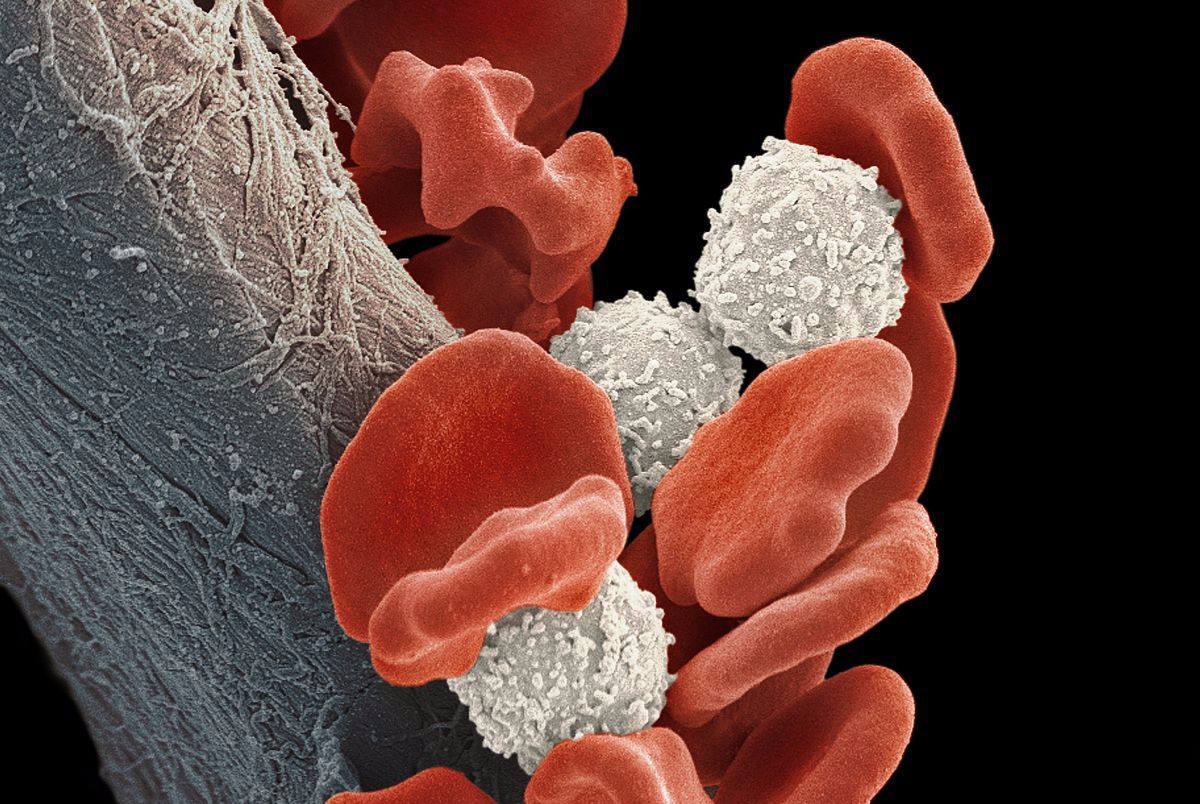创新背景
患有耐药性白血病的儿童已经尝试过几乎所有的治疗方法,由于其耐药性,治疗效果微乎其微。这种无反应的白血病非常罕见,但新的疗法能带来新的希望。
创新过程
研究人员由Waseem Qasim教授(伦敦大学学院大奥蒙德街儿童健康研究所和伦敦大学医学院免疫学顾问专家)领导,他们使用了一种称为CRISPR/Cas9的技术,这种技术在细胞DNA上切开一个口子,插入一个新的遗传密码。在这种情况下,遗传密码允许T细胞表达一种受体——称为嵌合抗原受体(CAR)——它可以识别癌变B细胞表面的一个标记,然后摧毁它们。
然后对这些T细胞进行进一步的基因编辑,这样它们就可以在不需要任何供体匹配的情况下直接使用。
2015年,一名一岁的患者通过CAR - T细胞疗法清除了体内的白血病。从一个健康的捐献者那里收集白细胞,并在一个特殊的实验室中使用名为TALENS (CRISPR的前体)的“分子剪刀”进行工程改造,使这些细胞适合移植到任何患者体内,并能够在全身寻找和清除白血病。

在实验治疗取得成功后,对21名接受治疗的患者(包括成人和儿童)进行了更大规模的研究。
尽管NHS目前提供了几种CAR - T细胞疗法,但它们依赖于收集和改造患者自己的细胞。这可能很昂贵,而且在短时间内并不总是可行的。
因此,科学家们现在正在研究基因组编辑,以便将捐赠的细胞预先制造出来,用于多个患者,旨在降低成本,使治疗更容易获得。
研究人员制造了供体CAR - T细胞库,使用单个失活病毒转移CAR - T细胞和CRISPR引导系统,然后应用mRNA技术——一种含有指令的分子,指导细胞制造蛋白质——激活基因编辑步骤。
该试验涉及6名14个月至11岁的复发和耐药b细胞急性淋巴细胞白血病(B-ALL)儿童。他们接受的治疗一直持续到2022年2月。
所有的孩子之前都接受过英国标准的B-ALL治疗,但他们的疾病多次复发。

患者通过静脉注射得到编辑过的细胞,治疗预计将持续四周左右。希望有足够的时间来达到深度缓解,一种癌症显著减少或检测不到的状态。成功后,患者就有资格进行骨髓干细胞移植,以帮助重建健康的免疫系统。
在最初接受治疗的6名儿童中,有4名在28天内进入缓解状态,这使他们能够接受干细胞移植。在这4名儿童中,有2名儿童在治疗后9个月和18个月仍处于持续缓解状态,而不幸的是,有2名儿童在干细胞移植后复发。
在本研究中,总体副作用在预期范围内,并在医院进行管理,其中一名患者需要短期的重症监护。该试验表明,经过编辑的T细胞可以清除一些患者原本无法治愈的白血病,但副作用仍然存在。
下一步,研究人员将为更多的儿童提供治疗,在他们的癌症尚未发展到目前为止的治疗途径的早期。
创新关键点
这项新研究是“通用的”CRISPR编辑细胞首次在人类身上使用,代表着在使用基因编辑细胞治疗癌症方面向前迈出的重要一步。
创新价值
这项研究展示了如何利用新兴的基因组编辑技术来解决一些患有严重疾病的儿童的健康需求。
Novel gene editing technology can be developed to treat drug-resistant leukemia in children
The researchers, led by Professor Waseem Qasim, a consultant immunologist at UCL's Great Ormond Street Institute of Child Health and UCL Medical School, used a technique called CRISPR/Cas9, which makes a cut in a cell's DNA to insert a new genetic code. In this case, the genetic code allows T cells to express a receptor -- called a chimeric antigen receptor (CAR) -- that recognizes a marker on the surface of cancerous B cells and then destroys them.
These T cells are then subjected to further gene editing so that they can be used directly without the need for any donor matches.
In 2015, a one-year-old patient was cleared of leukemia with CAR-T cell therapy. White blood cells are collected from a healthy donor and engineered in a special laboratory using "molecular scissors" called TALENS, the precursor of CRISPR, to make the cells suitable for transplantation into any patient and capable of seeking out and clearing leukemia throughout the body.
Following the success of the experimental treatment, a larger study of 21 treated patients, both adults and children, was conducted.
Although the NHS currently offers several CAR-T cell therapies, they rely on harvesting and modifying a patient's own cells. This can be expensive and is not always feasible in a short period of time.
So scientists are now working on genome editing so that donated cells can be pre-manufactured for use in multiple patients, aiming to reduce costs and make treatments more accessible.
The researchers made a donor CAR T cell library, used a single inactivated virus to transfer the CAR T cells and the CRISPR guidance system, and then applied mRNA technology -- a molecule containing instructions that direct cells to make proteins -- to activate the gene-editing step.
The trial involved six children aged 14 months to 11 years with relapsed and drug-resistant B-cell acute lymphoblastic leukemia (B-ALL). They were treated until February 2022.
All the children had previously been treated with standard British B-ALL, but their disease had recurred several times.
Patients received the edited cells intravenously, and the treatment is expected to last about four weeks. Hopefully that will be enough time to reach deep remission, a state in which cancer is significantly reduced or undetectable. After success, patients are eligible for bone marrow stem cell transplants to help rebuild a healthy immune system.
Of the six children initially treated, four went into remission within 28 days, which allowed them to receive stem cell transplants. Of these four children, two were still in sustained remission at 9 and 18 months after treatment, while, unfortunately, two children relapsed after stem cell transplantation.
In this study, overall side effects were within the expected range and were managed in the hospital, with one patient requiring short-term intensive care. The trial showed that the edited t cells could clear the otherwise incurable leukemia in some patients, but the side effects persisted.
The next step will be for the researchers to offer treatment to more children at an earlier stage when their cancer has not yet developed so far in the treatment pathway.
智能推荐
肿瘤学创新 | 创新升级”CADDIE” AI算法有助于检测早期结肠癌变
2022-11-03一种人工智能(AI)工具由伦敦大学学院等研究人员开发,经过进一步改进,可以识别难以发现的“扁平”息肉。
涉及学科涉及领域研究方向临床医学创新 | 开发“纳米颗粒”可帮助医疗人员准确识别头颈部癌症
2022-09-27杜克大学(Duke University)的研究人员开发了一种名为“Nanorattles”的独特纳米粒子,新的纳米颗粒形状可以同时大大增强来自多个独立生物标志物的信号,无需活检即可准确检测头颈部癌症,以改善全球健康。
涉及学科涉及领域研究方向药物摄入可能会增加高温引起的心肌梗死风险
2022-08-02耶鲁大学的陈凯团队通过对2494名患者的数据进行研究分析,认为服用抗血小板药物和β受体阻滞剂这两种常规心血管疾病治疗药物,将会提升患者非致命高温相关的心脏病风险。这一发现可以有助于开发针对性策略,降低与温度上升有关的心血管疾病负担。
涉及学科涉及领域研究方向AI+临床医学 | 利用人工智能检测剖腹产伤口感染情况
2022-09-21该项目将人工智能与临床医学相结合,创新开发了一个移动健康平台。该平台利用人工智能和实时计算机视觉来预测产妇剖腹产伤口的感染情况,并使用热成像技术解决了算法偏差,使得预测的准确率高达90%。
涉及学科涉及领域研究方向